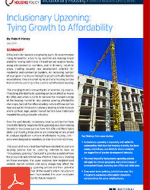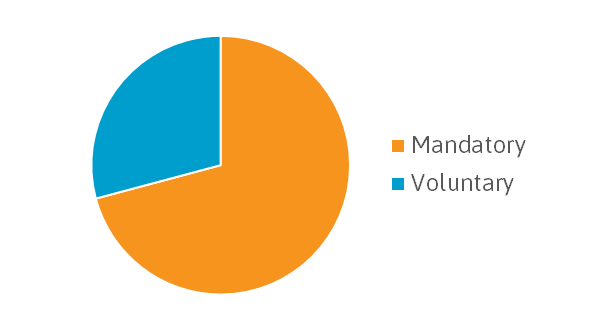This paper profiles six localities that have adopted inclusionary housing policies tied to upzoning, referred to here as “inclusionary upzoning.” Read Paper


Traditionally, most inclusionary housing programs mandate the provision of on-site affordable units in market-rate developments. A small number of voluntary programs are structured to offer incentives in exchange for affordable units.
Communities with a mandatory inclusionary housing program simply require that some percentage (usually 10 to 30 percent) of new units built be affordable for low-or moderate-income households. These communities may also offer developers incentives such as increased density to offset the cost of providing the affordable units, but the developer has no choice about whether to provide them.
Other communities offer developers a choice. Under these voluntary inclusionary housing programs (sometimes called “incentive zoning” programs), developers receive certain valuable incentives, such as the right to build at higher density, in exchange for providing affordable homes.
A 2021 study found that mandatory programs far outnumber voluntary programs; there are two-and-a-half times as many mandatory programs as voluntary programs (Wang and Balachandran, 2021).

Source: Wang and Balachandran (2021)
According to Grounded Solutions Networks’ inclusionary housing database, a smaller share (8 out of 20) of the nation’s most productive municipal programs are voluntary. Furthermore, the productivity of voluntary programs may be overstated in our data since voluntary programs often included units in 100%-affordable projects in their counts. In addition, a higher proportion of voluntary programs have produced no units at all.
However, voluntary programs have some notable political and legal advantages. In a few states where mandatory affordable housing requirements are prohibited by law, programs that offer bonus density or other incentives in exchange for voluntary production of affordable housing may be allowed. Even where state law allows mandatory requirements, the idea of trading density for affordable housing may be more acceptable politically than outright requirements.
No: While higher density buildings can add value to a real estate project, these buildings cost more to build – sometimes much more. Even if the added income of having more on-site units is more than the cost to build higher, increasing the allowable density may not automatically add enough value to offset the cost of providing affordable housing. Many voluntary inclusionary housing programs rely on an increased density incentive to encourage developers to build affordable units. But the track record of these programs suggests that increased density alone is not enough of an incentive.
A Grounded Solutions Network (formerly Cornerstone Partnership) study of the voluntary incentive zoning program in Seattle, Washington, found that more than half of eligible projects forewent the bonus density and built only to the base height.* Opponents of the program claimed that this was evidence that the housing requirements were overly burdensome. However, a subsequent study concluded that many projects would not have built to the higher density even if it were available with no affordable housing requirement* mostly because of the dramatic increase in construction costs for steel frame high-rise buildings. While the bonus density was valuable, it was not valuable enough to offset the added construction cost in many cases. The result of Seattle’s voluntary program was that extremely profitable mid-rise projects were not required to contribute to affordable housing, while their less profitable high-rise neighbors were.

This paper profiles six localities that have adopted inclusionary housing policies tied to upzoning, referred to here as “inclusionary upzoning.” Read Paper